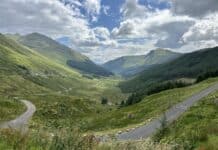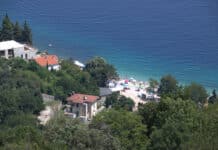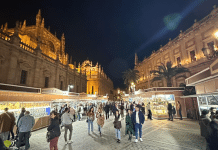What many people, including myself were unaware of, is that Cuba is the largest single island in the Caribbean. Travelling by road from top to toe, a journey of about 850 km, takes over 10 hours! That alone should indicate that there is so much more to Cuba than just Havana and Varadero, which is often people’s understanding. Strung out along both its north and south coasts, there are said to be some four thousand Cayo Islands which are connected by causeways.
Many are uninhabited and undeveloped and some of the most isolated parts of Cuba, yet the most beautiful. They are flat and devoid of towns or villages; however the beaches are idyllic, the nature is pristine and the hotels are excellent.
I was lucky enough to visit five of these Cayos. Let’s see what I discovered:
Causeways or Pedraplens
To reach the Cayo Islands there are three main causeways or Pedraplens on the north coast which connect the northern mainland of Cuba with the islands. Trust me the best way to understand this is to look at a map but I will try my best to simplify the explanation:
The first causeway to be built, known as Pedraplen Cayo Coco is 28 kilometres long and links the mainland of Cuba, from the town of Moron near Ciego de Avila to the islands of Cayo Coco and Cayo Guillermo, midway down Cuba’s north coast.
The second causeway is 48 km long and links the mainland, near Caibarien, to the island of Cayo Las Brujas and then onto Cayo Santa Maria. Together, Los Cayos de Villa Clara, Cuba, Cayo Las Brujas, Cayo Santa Maria and Cayo Ensenachos, form a mini archipelago called Los Cayos de Villa Clara.
The third causeway is 12 km long and connects the mainland at Playa Jigúey with Cayo Cruz and Cayo Romano.


The Archipelagos
Now to complicate matters further, while each Cayo Island has its name they also are clustered into groups of archipelagos, such as the Jardines De Rey or the Jardines de la Reina or the Colorado’s Archipelago.
All of this can get a little confusing especially if you don’t have a map so my top tip for exploring the Cayos is to buy a good one before you arrive in Cuba as despite every effort you will struggle to find one outside of the main towns or cities and even that may not be easy.
Let’s discover the Cayos that I had the pleasure of visiting to give you an idea of what to expect:
Cayo Paredon
The opening night of my tour around Cuba was a fabulous event held on the very small island of Cayo Paredon. The event took place under the shadow of the quite magnificent Faro Paredon, a colourful working lighthouse built in the mid-19th century. At 40 metres tall this iconic Cuban landmark was the perfect setting for a night introducing everything that is Cuba – colour, cuisine, music, and the most friendly, welcoming people!
The small diverse island of Cayo Paredon is located north of Cayo Romano, in the Jardines del Rey archipelago and is famous for the northern beaches at Playa Los Pinos, Playa del Norte and Playa Los Lirios while in the south there are mangroves and lagoons. Cayo Paredon is also popular amongst anglers for its fly fishing which is some of the best in the world.



Cayo Cruz
Nestled along the pristine shores of Cuba, Cayo Cruz invites those seeking an idyllic tropical escape. Known for its unspoiled beaches and crystal-clear waters, this secluded paradise offers a haven for relaxation and water enthusiasts. Renowned for world-class fishing opportunities, the expansive flats are teeming with diverse marine life. The laid-back atmosphere and lush surroundings create an ideal setting for beachcombing and nature walks.
Whether you’re an avid angler or a sun-seeker yearning for tranquillity, Cayo Cruz promises an enchanting retreat away from the hustle and bustle.


Cayo Coco
Cayo Coco is one of the more developed Cayo Islands in Cuba and with its range of luxury hotels, it makes an excellent choice for holidaymakers.
Embraced by the azure waters of the Caribbean, Cayo Coco stands as a tropical jewel off Cuba’s northern coast. Renowned for its pristine beaches like Playa Flamenco, this captivating island lures travellers seeking sun-kissed relaxation and water adventures. Connected to the mainland by a scenic causeway, Cayo Coco boasts all-inclusive resorts, providing a perfect blend of luxury and natural beauty.
Nature lovers flock to the island for the spectacular Birdwatchers’ Trail, home to diverse avian species, including flamingos. The vibrant coral reefs surrounding Cayo Coco beckon snorkelers and divers to explore the underwater wonders of the Jardines del Rey archipelago. Whether basking in the sun, exploring nature reserves, or partaking in water sports, Cayo Coco promises a blissful escape.


Cayo Guillermo
Perched off the northern coast of Cuba, there is the small island of Cayo Guillermo which beckons with pristine beaches and azure waters. Renowned for its stunning Playa Pilar beach, often hailed as one of the Caribbean’s finest beaches, the island lures visitors with its powdery sands and gentle surf. Adventure enthusiasts can explore vibrant coral reefs while snorkelling or diving.
This idyllic escape, once frequented by author Ernest Hemingway, offers a tranquil ambience and a peaceful realxing holiday. Cayo Guillermo provides an exclusive retreat, blending natural beauty with a touch of history, making it a sought-after destination for those seeking relaxation and outdoor pursuits.


Cayo Santa Maria
Nestled along Cuba’s northern coast, Cayo Santa Maria draws holidaymakers to its immaculate shores. Renowned for its dazzling beaches, such as Playa Perla Blanca, the island offers powdery sands kissed by the gentle Caribbean waves. A paradise for water enthusiasts, its crystal-clear waters host vibrant coral reefs, ideal for snorkelling and diving.
Cayo Santa Maria entices visitors with luxurious, all-inclusive resorts, creating an ideal setting for relaxation and indulgence. The island’s natural beauty is complemented by an array of outdoor activities, including water sports and eco-tours.
Other Significant Cayo Islands
Cayo Largo del Sur is popular for scuba divers and snorkelling. Cayo Levisa is a great place to switch off given its peaceful ambience whereas Cayo Jutias also offers an out-of-the-way haven yet with natural beauty and more of those mangrove trails that make exploration so exciting. The Isla de la Juventud on the South coast is the largest of Cuba’s islands and is quite difficult to reach so has yet to attract the hotels and much tourism.
Where To Stay In The Cayo Islands
I spent five nights at the Gran Muthu Rainbow on the island of Cayo Guillermo. This was an ideal base from which to explore the Cayos as well as parts of mainland Cuba such as Camagüey and Holguin.
Other options could be the Gran Muthu Cayo Guillermo, Gran Muthu Imperial, Muthu Colonial and the Gran Muthu Cayo Santa Maria.
Final Thoughts on the Cayos
The Cayo Islands are ideal for relaxation as the sun-soaked beaches and the general atmosphere are quite low-key. For nature lovers, divers, and bird spotters I would also recommend a stay.
A two-centre with Havana would be a good option to experience both aspects of Cuban life.
With Thanks
My Thanks to MGM Muthu Hotels, Gaviota Tours and the Ministry of Tourism for Cuba (MINTUR) for sponsoring my trip to Cuba which included my visits to each of the Cayos.












